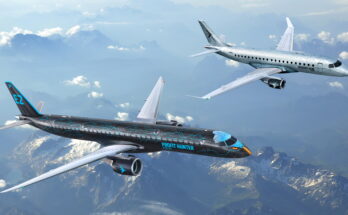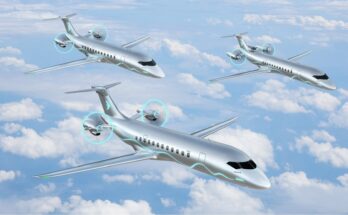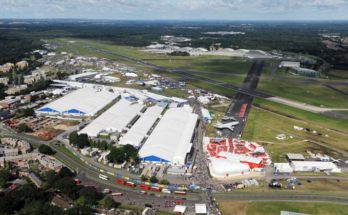
In the years ahead, the market for regional aircraft seating fewer than 50 passengers could see the advent of new propulsion technologies. This market may well become something of a proving ground for new ideas that could eventually impact the larger regional aircraft market and, indeed, commercial aviation as a whole. Propulsion technologies such as hybrid-electric or all-electric power might be introduced on new regional aircraft by the early 2030s, if not sooner.
The technological challenges should not be underestimated, though, particularly in regard to battery technology. Nevertheless, the transformative potential for the market is tremendous. A regional aircraft that produces little or no carbon emissions could dramatically transform much of the regional airline industry. Availability of such an aircraft could alter the business operating model of many carriers, especially in regions such as Europe, where environmental regulations are increasingly impacting airlines.
In November 2021, Embraer unveiled a concept for a family of aircraft aimed at helping the industry achieve a goal of net zero carbon emissions by 2050. Initially, the Energia family included four concepts for aircraft that ranged in capacity from nine to 50 passengers and incorporated different propulsion technologies. By late 2022, Embraer had revised the Energia line-up, dropping plans for a nine-passenger hybrid-electric model and adding 30-passenger hybrid-electric and hydrogen-powered aircraft. Embraer management indicated that the shift in focus to higher-capacity models was related to greater certainty of demand and better business cases for larger aircraft.
The new Energia series includes the 19-passenger E19-HE and 30-passenger E30-HE, which would feature hybrid-electric propulsion. Each would have a range of 500 nautical miles. They are aimed at service entry from around 2030.
Targeted for entry into service in 2035 are the 19-passenger E19-H2FC and 30-passenger E30-H2FC, which would feature hydrogen-electric propulsion. These aircraft would use electricity, generated by hydrogen fuel cells, to power a pair of aft-mounted electric motors. The range of each model would exceed 200 nautical miles.
The nine-passenger E9-FE is fully electric. It would have a 200-nautical-mile range and zero CO2 emissions. Service entry is posited for the 2035-2040 timeframe.
The final Energia concept is the 35-50 passenger E50-H2GT. Aimed at service entry in 2040, this aircraft would be powered by two gas turbine engines capable of using either aviation fuel or hydrogen. The aircraft would have a range of 350 nautical miles when using hydrogen, or 500 nautical miles when using Jet-A or Sustainable Aviation Fuel (SAF).
Embraer is currently evaluating the technical and commercial viability of each of the Energia concept aircraft.
Forecast International’s Civil Aircraft Forecast covers the rivalry between Airbus and Boeing in the large airliner sector; the emergence of new players in the regional aircraft segment looking to compete with Bombardier, Embraer, and ATR; and the shifting dynamics within the business jet market as aircraft such as the Bombardier Global 7000, Cessna Hemisphere, and Gulfstream G600 enter service. Also detailed in this service are the various market factors propelling the general aviation/utility segment as Textron Aviation, Cirrus, Diamond, Piper, and a host of others battle for sales and market share. An annual subscription includes more than 70 individual reports, most with a 10-year unit production forecast. Product comes complete with four Market Segment Analyses, covering the markets for: Large Commercial Jet Transports; Regional Transport Aircraft; Business Jet Aircraft; and General Aviation/Utility Aircraft.
Click here to learn more.
Raymond Jaworowski currently co-authors three of Forecast International's best-selling products: Civil Aircraft Forecast, Military Aircraft Forecast, and Rotorcraft Forecast. As a contributor to Aviation Week & Space Technology's Aerospace Source Book, he has authored Aircraft Outlooks, and provided input for the publication's Aircraft Specifications tables. Raymond has represented Forecast International at numerous conferences and trade shows, often as a featured speaker. He is a member of the American Helicopter Society.




